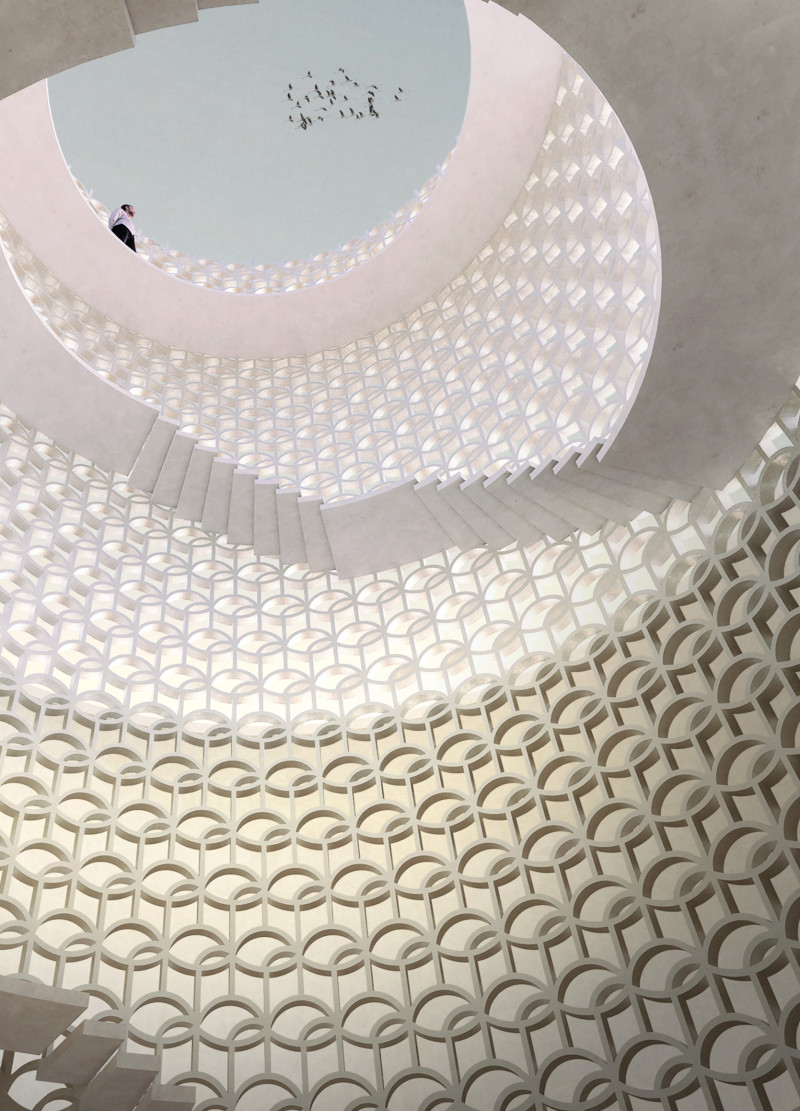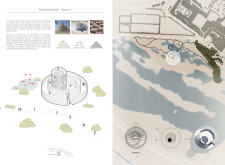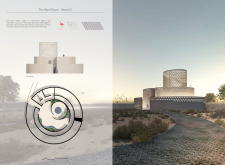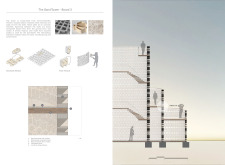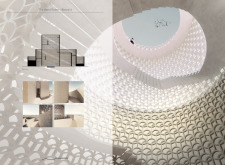5 key facts about this project
The Sand Tower is situated in a desert landscape and is designed to blend with its surroundings. Drawing inspiration from traditional forts, the tower resembles a fort made of sand blocks, connecting it visually and contextually to the environment. Its purpose is more than just to observe; it enables exploration and contemplation of both the land and the sky.
Conceptual Framework
The design is influenced by the astrolabe, an ancient device used for navigation and astronomical observations. This inspiration is evident in the structure’s geometry, which features two interlocking circles. This design allows for optimal views from the ramp and terraces, encouraging users to engage with the vast desert and the sky above, enhancing the connection to the natural world.
Design Features
A continuous, shallow ramp leads up to a higher platform, offering 360-degree views that invite users to take in the landscape from all angles. Inside, a shaded atrium offers a place for rest and contemplation, responsive to the desert’s light and heat. This aspect encourages meaningful engagement with the environment while providing comfort from the elements.
Material Considerations
The materials chosen for the Sand Tower reflect a focus on sustainability. The walls are made of interlocking recycled plastic modules, providing both strength and a reduced environmental footprint. These walls sit on concrete trenches for stability. Wood plastic composite beams connect the walls and form the ground floor and ramps, further emphasizing the project’s commitment to environmentally friendly design.
Visual and Aesthetic Elements
The structure features an interlocking pattern of sand blocks that visually resemble a group of flamingos. This design choice echoes natural forms, with three simple curves and two vertical lines that invoke the elegance of these birds. The facade’s layered textures contribute to a dynamic play of light and shadow, inviting closer inspection and highlighting the building’s thoughtful detailing.


